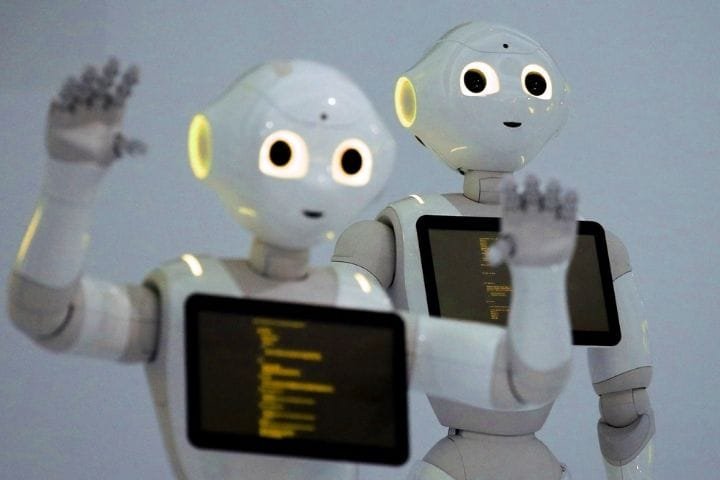
We present fascinating facts about robots in this article. A few decades ago, robots – programmable machines – were only protagonists in science fiction films. Today it is impossible to imagine everyday life without them. Whether in car construction, in the household or on the operating table: Artificial intelligence complements human labour in many areas. But where are the origins of robotics? When did the term first appear, and what innovations can we expect in the coming years?
The Origin
The word “robot” is derived from the Czech “robota”, which translates as “front service” or “forced labour”. Today the term is used for programmable machines that can perform human tasks quickly and easily. The word was first used in the 1920s play “RUR: Rossum’s Universal Robots” by the Czech. In the drama, the robots overthrow their human creators.
The Mechanical Knight
In 1495, the Italian polymath Leonardo da Vinci drafted detailed plans for a mechanical knight based on human structure. With the help of cables, he could sit, stand up, lift the helmet visor and move his jaw, arms and neck. In 2002, the roboticist Mark Rosheim took da Vinci’s robot knight as a template and developed a prototype to speak and wave. These designs later served as inspiration for robots he built for NASA.
Similar To Humans
A robot that resembles a human in terms of appearance and behaviour is known as an android – a humanoid robot. One of the most famous specimens from science fiction is “Data”, Lieutenant Commander from the Star Trek series “Spaceship Enterprise – The Next Century”. Perhaps a little less well known is “Repliee Q1” – an android with the appearance of a 35-year-old woman, which the Japanese scientist Hiroshi Ishiguro developed in 2003.
The Robot Laws
The “Three Laws of Robotics” were first described in 1942 by Isaac Asimov in his short story “Runaround”. According to this, robots must:
- Not injure a human being or allow harm to him.
- They must obey the commands given by a human being – unless such a command collides with the first rule.
- Their existence protects as long as this protection does not conflict with the law.
However, these rules are taken in movies – there are separate safety regulations for industrial and household robots and robots in the military sector.
Father Of Robotics
The American Joseph Engelberger is considered the father of robotics. In 1961, together with George Devol, he founded the world’s first manufacturer of robots – “Unimation Inc.”. “Unimate” was the first industrial robot that the Ford company used in production, where it welded die-cast parts for vehicle bodies.
In The Service Of Man
Robots that provide services to humans are known as service robots. They bring and fetch objects, inform and navigate or monitor the surroundings of their owners: household helpers such as “Pepper” are ubiquitous in Japan. “Pepper” is the first humanoid robot programmed to analyze human emotions using gestures and facial expressions and react accordingly. In Europe, vacuum cleaners and lawnmower robots are currently mainly used.
Nanobots In The Bloodstream
They are a billion times smaller than a grain of salt: nanorobots. These tiny robots consist of different atoms and are supposed to revolutionize the healthcare system completely: They search specifically for cancer cells in the body and then cut off their blood supply. Initial tests have already shown the concept to be practical.
Future Of Care
The use of social robots has been tried out for some time in care for the elderly. For example, with Rosie, the robot seal. It weighs 3 kg, is 50 cm long and has sensors and artificial intelligence to simulate a living baby seal. The Paro model’s therapeutic robot is used to lighten seniors’ moods, especially those with dementia or children with autism. It is said to reduce anxiety and pain, improve the quality of sleep, and reduce loneliness. Over 4,000 Paro seals are in use worldwide.
Eye With A 360° View
Gluing, welding and grouting – industrial robots work with millimetre precision. The machine needs a kind of eye so that the robot controller can see where the adhesive or welding head is currently located. The existing sensors were previously limited in their flexibility due to shading: if the direction of movement changed, the eye remained “blind”.The patented SensePRO laser sensor has a specially developed evaluation sensor that enables a shadow-free all-round view, i.e. complete flexibility in the measurement direction. Sense is expected to go into series production by 2021. These are the fascinating facts about robots.
Also Read: The Network Of The Future: 5G
